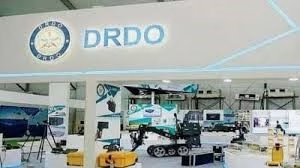Farming is no longer just about soil, sun, and sweat—welcome to smart farming, where edge devices are planting the seeds of a new agricultural revolution. In 2025, tech is not just for cities and space—it’s digging deep into the fields, quite literally. From autonomous tractors to real-time crop monitoring, edge computing is transforming how we grow our food.
Let’s break down how edge technology is giving a digital edge to the age-old practice of agriculture.
🚜 What is Edge Computing in Agriculture?
Edge computing brings computation closer to the data source—in this case, sensors, drones, or robots on farms. Instead of sending all the data to a distant cloud server, edge devices process it locally, in real-time.
This means:
- Faster decisions
- Less bandwidth usage
- More responsive farming systems
Imagine a soil sensor detecting moisture levels and immediately adjusting irrigation—no need to wait for cloud-based instructions. That’s the power of the edge.
🌱 Real-World Applications in the Field
Let’s explore some practical and innovative uses of edge devices in smart farming.
1. Precision Irrigation Systems
Edge-powered moisture sensors detect exactly where water is needed and how much. Combined with AI, these systems reduce water waste, cut costs, and boost crop yields.
Example: Israeli startup CropX uses edge analytics to power smart irrigation based on real-time soil data.
2. Pest and Disease Detection
Cameras and edge processors scan leaves for early signs of disease or insect infestation. These systems alert farmers immediately so they can take preventive action.
Example: Edge-enabled drones in India are now capable of spotting pest patterns and applying pesticides only where needed.
3. Livestock Health Monitoring
Wearable edge devices track animal temperature, movement, and feeding patterns. If a cow shows signs of illness, the farmer gets an instant notification.
Fun fact: Some dairy farms in Europe now use edge-based facial recognition to monitor individual cows!
4. Autonomous Machinery
Self-driving tractors and harvesters use edge computing for navigation and obstacle detection—processing data in real time without relying on the cloud.
John Deere’s latest autonomous tractor is equipped with edge processors that handle real-time terrain and crop data analysis.
☁️ Why Not Just Use the Cloud?
The cloud is great—but not when you’re in a remote wheat field with weak connectivity. Edge computing ensures that even without internet, your devices can still make smart decisions.
Plus, edge devices:
- Minimize latency
- Enhance privacy and security
- Reduce cloud costs
- Keep operations going offline
In farming, where seconds matter (especially in irrigation and disease control), edge can be the difference between a bumper harvest and a bad season.
🌍 Impact on Sustainability
Smart farming with edge computing isn’t just about profit—it’s about planet-friendly practices:
- Reducing water and fertilizer usage
- Minimizing chemical treatments
- Optimizing energy consumption
This is precision agriculture at its best—doing more with less, while protecting natural resources.
🧠 The Future: AI Meets the Edge
As AI and edge computing merge, future farms will be completely autonomous ecosystems. Think robots planting, AI drones monitoring, edge devices making micro-decisions—all in real time.
Soon, farmers won’t just be cultivators—they’ll be data managers and tech innovators.
🌾 Final Thoughts: Harvesting the Power of Innovation
The next agricultural revolution won’t be televised—it’ll be computed at the edge.
Edge devices are making farms smarter, greener, and more efficient. Whether it’s feeding more people or fighting climate change, this fusion of agriculture and technology is reshaping how we grow food in the 21st century.
So the next time you bite into a perfectly ripe tomato, remember—it might just be the product of real-time edge analytics.





